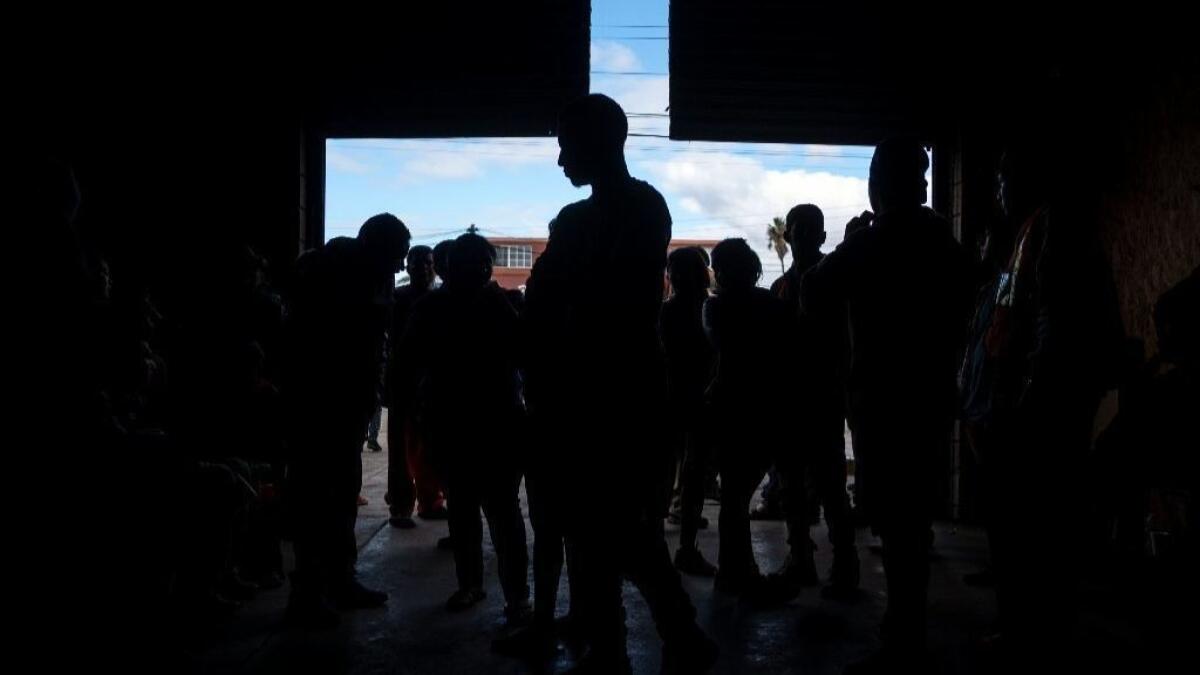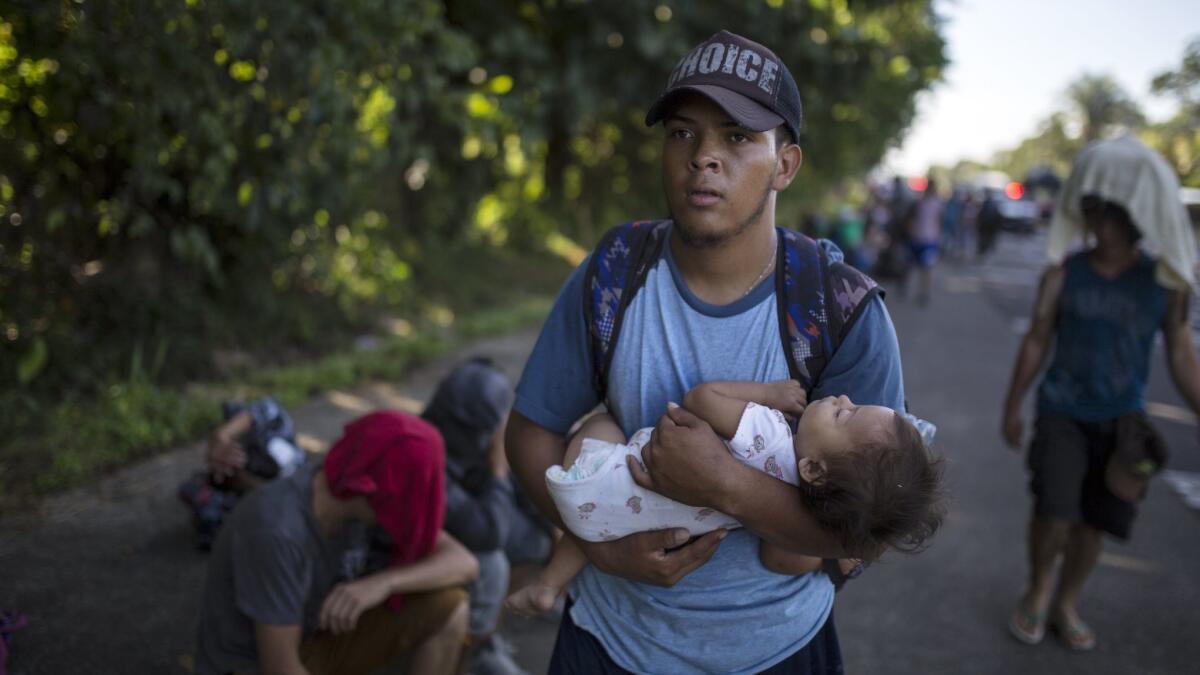U.S. agrees to aid for southern Mexico and Central America, but not to deal on asylum seekers

Reporting from Washington — The United States on Tuesday announced it was adding billions of dollars to an ambitious Mexican development project for that country’s southern region and Central America as a way to deter migration.
But neither Washington nor Mexico City announced any headway in the Trump administration’s goal of keeping Central American asylum seekers in Mexico and out of the United States.
In simultaneous announcements in the U.S. and Mexican capitals, the U.S. State Department and Mexican Foreign Secretary Marcelo Ebrard said the United States has committed to $5.8 billion in public and private money for Central America and an additional $2 billion for southern Mexico.
Most of the money was already in the pipeline, allotted by the Obama administration and in the early months of the current government, or requested for the upcoming fiscal year 2019.
About $2 billion is new money potentially available through the Overseas Private Investment Corp., the government’s financial development arm. The funds, including loans, are distributed based on the “commercial viability” of projects, State Department officials said.
“We are committed to promote strong regional economic growth, better-paying jobs and greater opportunities for all of our citizens,” Ebrard said in Mexico City.
Last week, the new Mexican government of President Andres Manuel Lopez Obrador announced plans to spend $30 billion over five years for development in southern Mexico.
Mexico is under enormous pressure from the Trump administration to curb illegal migration from Central America, and the U.S.-Mexico projects are aimed at fighting the poverty and joblessness that push thousands of Guatemalans, Salvadorans and Hondurans, as well as Mexicans from country’s impoverished southern states, north to the United States.
The U.S. money announced Tuesday is also designed in part to be an incentive to the Mexican government to go along with President Trump’s demands that Central American asylum-seekers be kept in Mexico and not allowed to cross the U.S. southern border.
In talks with Ebrard and other senior Mexican officials, the Trump administration has pushed for a “remain in Mexico” program where those headed north would stay in Mexico while their asylum claims were processed, something that can drag on for years.
Immigrant advocates in the United States have denounced the plan as illegal, and Mexico has so far refused to go along. Any mention of the idea was conspicuously absent from Tuesday’s announcements.
State Department spokesman Robert Palladino said in Washington that the money announced Tuesday was part of a “holistic, coordinated approach” by Secretary of State Michael R. Pompeo and the new Mexican government to stem illegal immigration.
The financial pledges stood in sharp contrast to Trump’s repeated threats to cut off aid, not increase it, to Mexico and Central American countries if they did not prevent their citizens from migrating to the United States.
Palladino said the administration still expects the recipients of U.S. aid to “hold up their end of the bargain” and to “show results.”
Mexico has pushed economic development as an alternative to Washington’s hard-line enforcement approach, and Tuesday’s joint announcements appear to indicate U.S. officials are willing to accept some of the Mexican philosophy, at least for now. That contrasts with some of the heated electoral rhetoric from Trump and his supporters on the so-called caravans of migrants that made their way across Mexico in recent months.

“The idea is that people would not have the need to migrate,” Lopez Obrador, who took office on Dec. 1, told reporters in Mexico City last week.
Lopez Obrador, a left-wing populist, has maintained a cordial relationship with Trump, despite the two leaders’ divergent ideological pedigrees.
Tuesday’s joint announcement was yet another sign of how Mexico’s new leadership has sought to accommodate Trump without compromising Lopez Obrador’s oft-stated commitment to respect the “human rights” of migrants.
“This declaration reflects the importance that both countries place on our bilateral relationship,” Ebrard said. “The spirit of cooperation between our countries is strong as seen in institutional, economic, family and cultural links that unite Mexico and the United States.”
The topic of international migration is a sensitive one in Mexico, which has long been the major source of immigrants — both legal and illegal — to the United States. But in recent years the U.S.-bound flow of undocumented Mexicans has dwindled as the numbers of Central Americans detained along the southwestern U.S. border have increased.
In their Tuesday announcement, the U.S. and Mexico also agreed to a series of cabinet-level meetings starting in January, a business summit and creation of a task force to “address the root causes of migration.”
Most of U.S. aid for the region is earmarked for projects that promote good governance, institutional reform, human rights and job creation. Experts say those projects have had spotty success in a region still devastated by violence and official corruption.
Wilkinson reported from Washington and McDonnell from Mexico City.
For more on international affairs, follow @TracyKWilkinson on Twitter
Twitter: @PmcdonnellLAT
More to Read
Sign up for Essential California
The most important California stories and recommendations in your inbox every morning.
You may occasionally receive promotional content from the Los Angeles Times.











